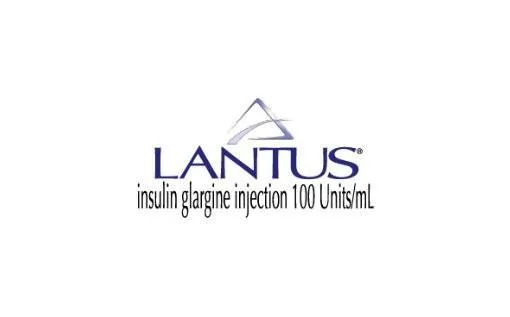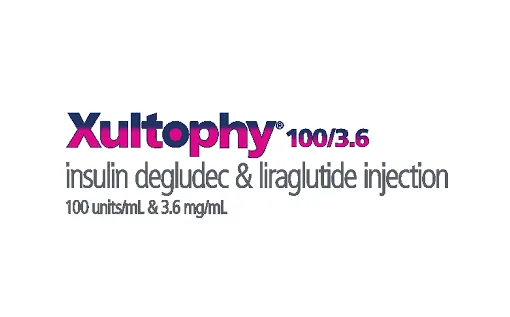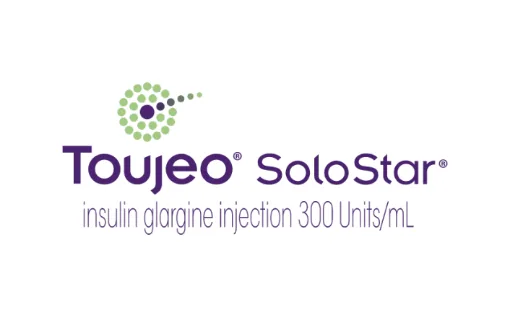- Your cart is empty
- Continue Shopping
Product
- Canadian Pharmacy Online Pharmacy | Online Canadian Pharmacy
- Need More Information Call Us 1-833-356-6337
LANTUS INSULIN Pen $157 – Canada Pharmacy
What is Lantus?
People with diabetes either do not produce enough insulin, or their bodies are unable to properly use the insulin that they do produce. When your body does not make enough insulin, you may need an external source of it.
Lantus is a brand name of insulin glargine, which is a long-acting insulin analog. Insulin analogs are man-made versions of the naturally occurring insulin. Lantus is a type of insulin called basal, or baseline insulin that is slowly released giving a long duration of action. This is contrasted to mealtime, or bolus, insulin which has a rapid onset and it typically used to control blood sugar levels during meals. The two types of insulin are commonly used together to provide all day control of blood sugar levels.
What is Lantus used for?
Lantus is used for the treatment of adults with type 2 diabetes, and also adults and children aged six and older with type 1 diabetes for the control of high blood sugar. It supplies a steady release of insulin to help control your blood sugar levels overnight and between meals. Treatment with Lantus may also need the support of a faster acting mealtime insulin that helps reduce the effects of blood sugar spikes that occur during and after meals. It is usually taken in the evening or night time by people having type 1 diabetes, latent autoimmune diabetes of adults but rarely with those with type 2 diabetes. It is typically self-injected subcutaneeously (under the skin) once daily. Lantus is not to be used to treat diabetic ketoacidosis (DKA).
How does Lantus work?
Lantus works by controlling blood sugar levels in the body just like naturally occurring human insulin does. It helps control your blood sugar all day with its formulation of microcrystals that slowly release the insulin, giving you a long-term baseline of insulin action that lasts up to 26 hours. Its action resembles the average secretion of natural insulin from non-diabetic pancreatic beta cells. This medication starts to work several hours after your injection and keeps working evenly throughout the day, without the spikes or peaks seen with most other insulin analogs.
What is a Lantus Cartridge?
Lantus cartridges contain insulin glargine, which is a long-acting insulin. It is meant to be used only with corresponding insulin pens. When you purchase a package of Lantus Cartridges, you receive five 3ml cartridges.
Lantus Insulin Cartridges contain insulin glargine meant for injections to help you manage diabetes. The solution in these cartridges is a revolutionary type of insulin and it is indicated for one daily dose. You should talk to your doctor about your specific treatment. The recombinant human insulin analog contained in these cartridges can be used on patients over the age of 17 with either diabetes Type 1 or diabetes Type 2 mellitus who can benefit from the use of long acting insulin to manage hyperglycemia. Ask your doctor for more information about this product and whether it is recommended for you.
What is a Lantus Cartridge used for?
Lantus is used by adults, adolescents, and even in children aged six and above with insulin-dependent diabetes mellitus. Lantus cartridges must only be used with OptiPen, ClikSTAR, TactiPen, and Autopen 24, since dosing accuracy has only been established with these insulin pens. Lantus can be used alongside other types of insulin and oral antidiabetic medications.
Why use Lantus Cartridges?
Lantus cartridges permit once-daily dosing, which is convenient and tolerable for many patients with diabetes. Also, Lantus has been clinically proven to lower HbA1C and improve blood sugar control when used alongside with proper diet and exercise.
Once opened, Lantus cartridges can be used for up to four weeks when kept at room temperature. This further adds to its convenience, as patients can enjoy the flexibility of keeping their insulin pens with them instead of storing it into the refrigerator after every dose. It also has a shelf-life of three years.
What is Lantus SoloSTAR Pen?
Lantus SoloSTAR Pens contain injectable insulin glargine, which is a form of regular human insulin that has been modified to increase the duration of action. It is also known as a basal insulin as it provides insulin coverage consistently for a full day after a single daily injection. For every package of the Lantus SoloSTAR Pen, there are five insulin pens with 3ml of insulin glargine with a concentration of 100 units/ml.
What is Lantus SoloSTAR Pen used for?
Lantus SoloSTAR Pen is used for both Type 1 and Type 2 diabetes mellitus, and also for neonatal diabetes mellitus. Lantus SoloSTAR Pens are typically used with oral antidiabetic medications such as metformin and other insulin injection types such as fast-acting (e.g. insulin aspart) or intermediate-acting insulin (e.g. insulin aspart protamine). This is to help ensure that the blood sugar levels remain within the normal range throughout the day, especially after meals.
Why use Lantus SoloSTAR Pen?
Insulin glargine in the Lantus SoloSTAR Pen has a relatively consistent concentration over time that closely mimics the normal physiological release of insulin in the human body, so patients can expect a lower risk of hypoglycemia. Additionally, the pen can be used with ultra-fine needles that make the injection process less painful. The font used in the dosing window is largely printed and clearly displayed, which helps ensure the correct dose. The turn-based mechanism to adjust the dose and the push-button injection feature are ergonomically constructed to ensure ease-of-use.
Insulin glargine permits a once daily administration, it has less variability in its action in different patients, and has a significantly lower risk of hypoglycemia, especially nocturnal and severe hypoglycemia. Patients on other forms of insulin are also more prone to weight gain issues. Not to mention that you can receive greater discounts if you buy more than one Lantus SoloSTAR Pen at a time.
What is Lantus (Insulin Glargine) Vial?
Lantus vial contains Lantus insulin, which is a brand name of insulin glargine, a long-acting insulin analog. Its absorption, distribution and metabolism in the body is very similar to naturally occurring human insulin produced in people who do not have diabetes.
What is it used for?
Lantus is used for the control of high blood sugar levels in the treatment of adults with type 2 diabetes. It is also prescribed for adults and children (aged 6 years and older) with type 1 diabetes who require a long-acting insulin. It supplies a slow, consistent release of insulin all day to help regulate your blood sugar levels between meals and overnight. Your treatment may also require the support of a fast-acting mealtime insulin to help control blood sugar level spikes during meals. Lantus is typically used as a once daily, self-administered injection. It is not used for the treatment diabetic ketoacidosis (DKA).
How does it work?
Lantus works by simulating the action of naturally occurring insulin, which normally controls blood sugar levels in the body. The primary function of insulin (including insulin glargine, the kind used in Lantus) is the regulation of sugar metabolism. It lowers blood sugar levels by stimulating blood sugar absorption from the blood into skeletal muscle and fat cells, and by blocking sugar production by the liver. Studies have shown that insulin glargine and naturally occurring human insulin have the same effectiveness and ability to lower blood sugar levels. Compared with NPH human insulin, subcutaneously injected insulin glargine has a slightly slower onset and a longer duration of action. This is because of the microcrystals in its formulation that slowly release the insulin, giving a long duration of action of 18 to 26 hours, with a relatively steady effect profile and little peak of action.
Lantus Side effects
Common negative effects may include:
- Hypoglycemia (low blood sugar)
Other negative effects may include:
- Hyperglycemia
- Diabetic ketoacidosis (DKA)
- Injection site reactions
Hypoglycemia, otherwise known as low blood sugar, is one of the most common side effects experienced by insulin users. It can develop because of stress, illness, taking too much insulin, skipping or forgetting meals, increased exercise, using a new type of insulin and taking other medication, including prescriptions, over-the-counter medicines, herbs, vitamins and street drugs.
Signs of severe hypoglycemia can include
- disorientation
- convulsions
- loss of consciousness
- seizures.
On the other hand, hyperglycemia (high blood sugar) may develop if your body has too little insulin.
Symptoms of hyperglycemia may include
- confusion
- drowsiness
- nausea
- increased thirst
- decreased appetite
- vomiting
- flushed dry skin
- quickened heart rate
- increased urination
- dehydration
- blurred vision
- a fruity breath odor.
If left untreated, hyperglycemia can progress into diabetic ketoacidosis (DKA), and result in unconsciousness and death.
Diabetic ketoacidosis (DKA) can develop from poorly controlled or uncontrolled diabetes. It occurs when your body does not have enough insulin, which can occur if you miss your insulin dose or take a smaller dose, eat too much, or develop an infection or fever.
Symptoms of DKA come on gradually and may include
- thirst
- flushed face
- feeling drowsy
- loss of appetite.
If you have a rapid pulse with heavy breathing that may be a sign of a more serious condition. If left untreated, loss of consciousness, coma, or even death can result. If you think you may be experiencing any of these symptoms, get medical assistance immediately.
Possible reactions on the skin at the injection site can include lipoatrophy, the localized loss of fat around the injection site that can look like depression in the skin, and lipohypertrophy, which is the accumulation of extra fat at the injection site which may look like a small lump. Other localized skin reactions may include swelling, itching and redness at injection site.
How to take this medication
Lantus is taken as a subcutaneous injection, and the injection sites within each injection area (abdomen, thigh, buttock or deltoid) must be changed from one injection to the next. After injection, the area must not be massaged or rubbed. Speak to your doctor if you are not sure how to use this medication.
Lantus should only be used if the solution is clear and colorless with no particles or clumps visible. It is a clear solution, not a suspension like some other insulin products.
Dosage
Many factors can affect your usual Lantus dose, which include changes in your diet, activity level, or work schedule. Other factors that may affect your dose are illness, pregnancy, medication, exercise, and travel.
Lantus is taken subcutaneously, once a day, at any time during the day as long as it is taken at the same time every day.
If you have type 2 diabetes but have not been prescribed insulin before, you may be started at a dose of 10 U, once daily, and then have your dose subsequently adjusted according to your insulin needs. If you are changing over to Lantus from treatment with another intermediate or long-acting insulin, the amount and timing of that previous dose may need to be adjusted to avoid the risk of hypoglycemia.
Warnings and Precautions
The drug should not be used:
- If you are allergic to this drug or to any ingredient in the formulation or component of the container
- If you have diabetic ketoacidosis
- For intravenous or intramuscular injections
Before you use it, talk to your doctor if:
- You are planning to have a baby, are pregnant, or are nursing a baby
- You are taking any medication Manufactured by SanofiI
IMPORTANT NOTES:
The information contained on this website is intended as an educational aid only. It is not intended as medical advice for individual conditions or treatment. It is not a substitute for a medical exam, nor does it replace the need for services provided by medical professionals. Talk to your doctor, nurse or pharmacist before taking any prescription or over the counter drugs (including any herbal medicines or supplements) or following any treatment or regimen. Only your doctor, nurse, or pharmacist can provide you with advice on what is safe and effective for you







